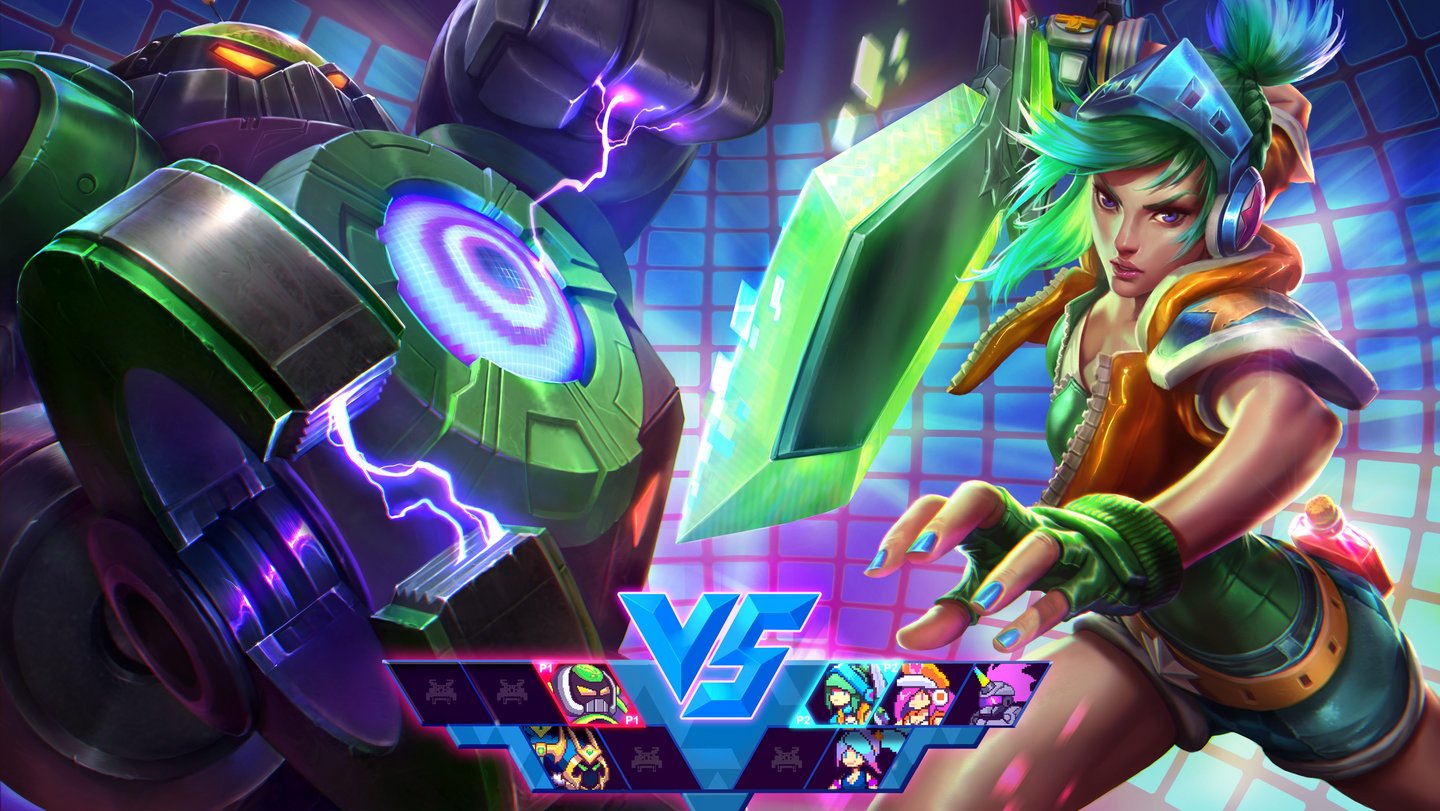It’s no secret for people that hang out in online spaces, be they games, social media, or any other of the multitude of virtual meeting grounds, that people aren’t always kind to each other. And even though the vast majority of people aren’t usually mean to others, it only takes a few disruptive players to create an uncomfortable environment for everyone else.
Almost everyone wants this to change. We do too. And we are actively working on ways to make our games safer, more inclusive, and, at the end of the day, more fun for everyone. There are no shortages of challenges that come with this goal and no easy solutions either.
While Riot’s teams take action on reported and confirmed disruptive behavior, we’re also looking for longer term solutions. That’s where Player Dynamics design comes in. The goal of Player Dynamics as a design discipline is to build gaming structures that foster more rewarding social experiences and avoid harmful interactions from the jump. Simply put, the discipline aims to answer the question: “How do we foster and sustain healthy communities online?”
This post will provide an update on how Player Dynamics design has evolved since we last spoke about it and since the discipline was formally introduced at GDC in 2020. We want to give you a look at internal materials we use to introduce Rioters to the craft and how we try to adopt Player Dynamics thinking across all our work.
This is part one of a two part series introducing the idea of Player Dynamics design and how it impacts the gaming experience. This is an important topic and one we don’t take lightly which is why we are dedicated to peeling back the curtain and showing you how we’re working to make player dynamics better.
What is Player Dynamics Design?
Here’s how we’ve been describing Player Dynamics internally for the last couple of years:
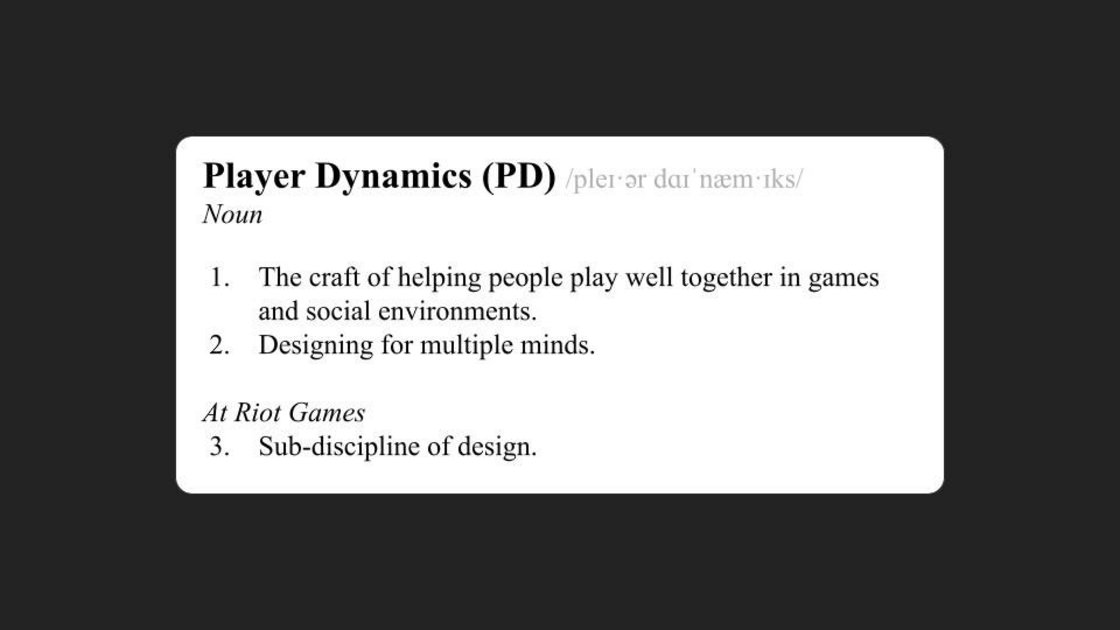
As Marc Merrill, one of Riot’s co-founders, recently put it, Player Dynamics is a “modern approach” to developing online games and social environments. Our ultimate goal is to fulfill the promise of our games and help their social experiences be as rewarding as possible by design. Addressing disruptive behavior isn’t the point of Player Dynamics – it’s a part.
However, we recognize that disruptive behavior is a big concern, so let’s talk about two concepts from social science that have proven effective in helping Rioters understand how Player Dynamics designers think.
The first concept is best summed up in the book Prosocial:
“One of the most robust findings in social psychology is that we tend to attribute bad behavior in others to personal intent, when in fact it is often due to situational constraints.”
The second related concept is Lewin’s Behavior Equation:
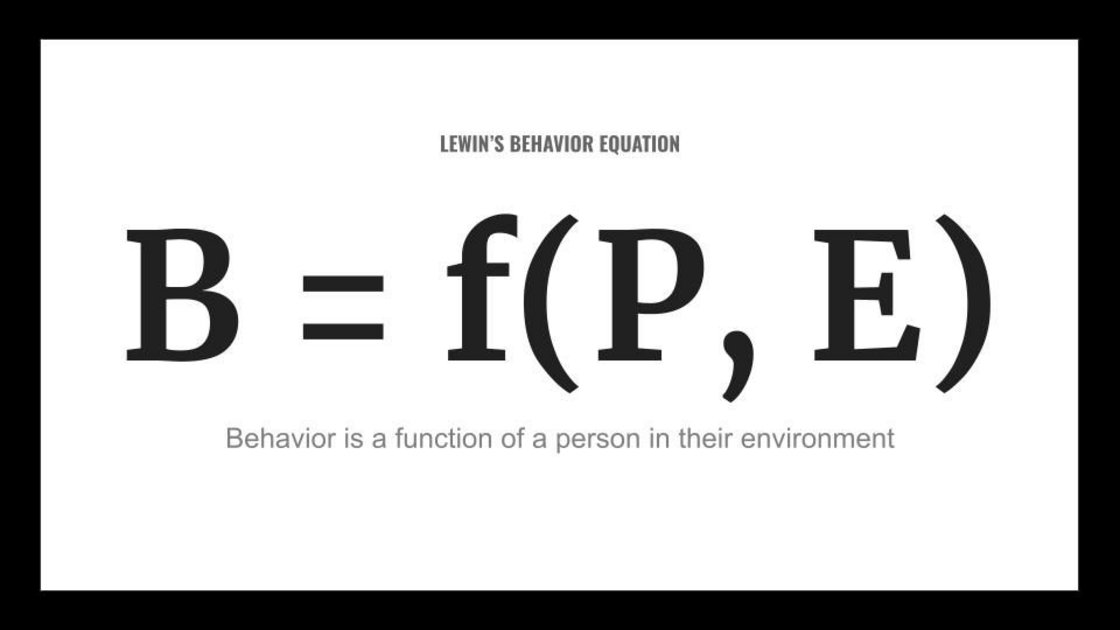
Basically what seems intentional is often situational, and to change behavior, change the environment.
This should be empowering to game creators because we have a pretty heavy hand in defining game situations and environments. Designers can do far more than they might realize at first to avoid social friction, which can manifest as disruptive behavior. The purpose of formalizing Player Dynamics into a design discipline is to help show designers how to avoid that social friction.
Now let me be perfectly clear, we recognize that we can’t design away all disruptive behavior. We also recognize that sometimes players are being intentionally harmful. These kinds of behaviors have no place. From our perspective, anyone being repeatedly harmful is taking themselves out of the game.
But what we can do, and there’s a lot of research to back this up, is reduce the likelihood of disruption, increase the opportunities for more positive experiences, and build resiliency in players and communities.
Foundations of Player Dynamics
In many ways, we’re attempting to translate about 150 years of social science into features and services for games and their ecosystems to create better player experiences. The foundations of Player Dynamics in the game industry goes back many years. We consider a number of games and works to represent milestones in this space:
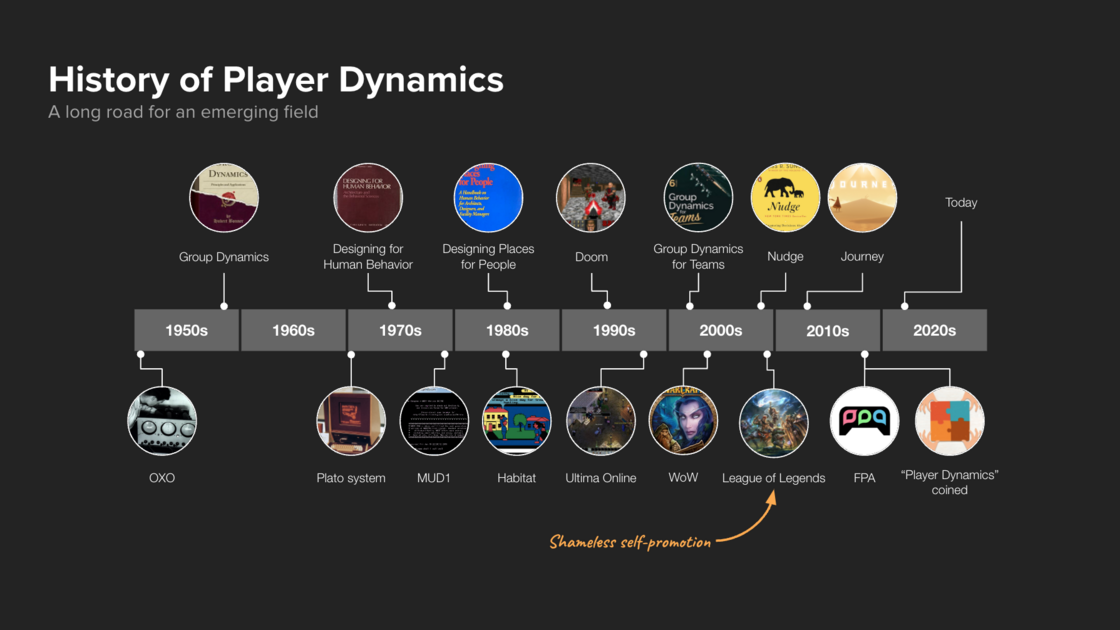
Some, of course, are groundbreaking as multiplayer games in their own right. Some we consider to be exceptional Player Dynamics pioneers. Habitat (1985) is definitely among the earliest to actively deal with behavior issues – and that’s back when people paid by the minute for the Internet!
Riot got into the Player Dynamics game in 2012 with the Player Behavior team. During this time we learned quite a bit, including how we might do things differently when starting a game from scratch. We began officially developing Player Dynamics as a sub-discipline of design in 2018 and announced it in 2020.
Player Dynamics shares many of the same skills as game design and UX, but it also requires some skills these disciplines don’t usually need:
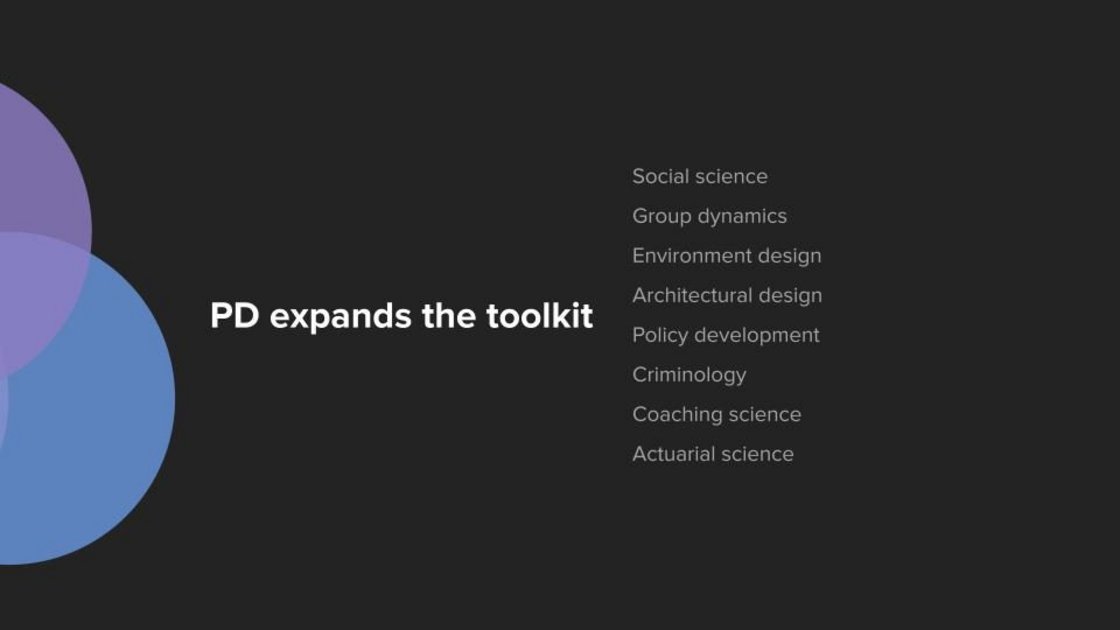
Player Dynamics gets its name from the well-established field of social dynamics. Though some companies are calling this “social design,” we prefer the emphasis on “player” and to avoid the common misconception that this is only about chat.
State of Player Dynamics Design
So where are we now?
Player Dynamics work is now being done in many parts of the company. From early stage games (such as Project L), to speciality teams on live products (League, VAL, Wild Rift), to Central Player Dynamics and new fan-focused initiatives on Platform, to our growing community of practice.
We’re organized more or less as a hub-and-spoke, with our centralized group of SMEs on Platform coordinating with teams in other areas of Riot. Each of these is working on different challenges at different stages of development. Each will speak individually about the features and services they’re developing when they’re ready.
Speaking of stages of development, here’s how we’ve been showing Players Dynamics in the lifecycle of a game:
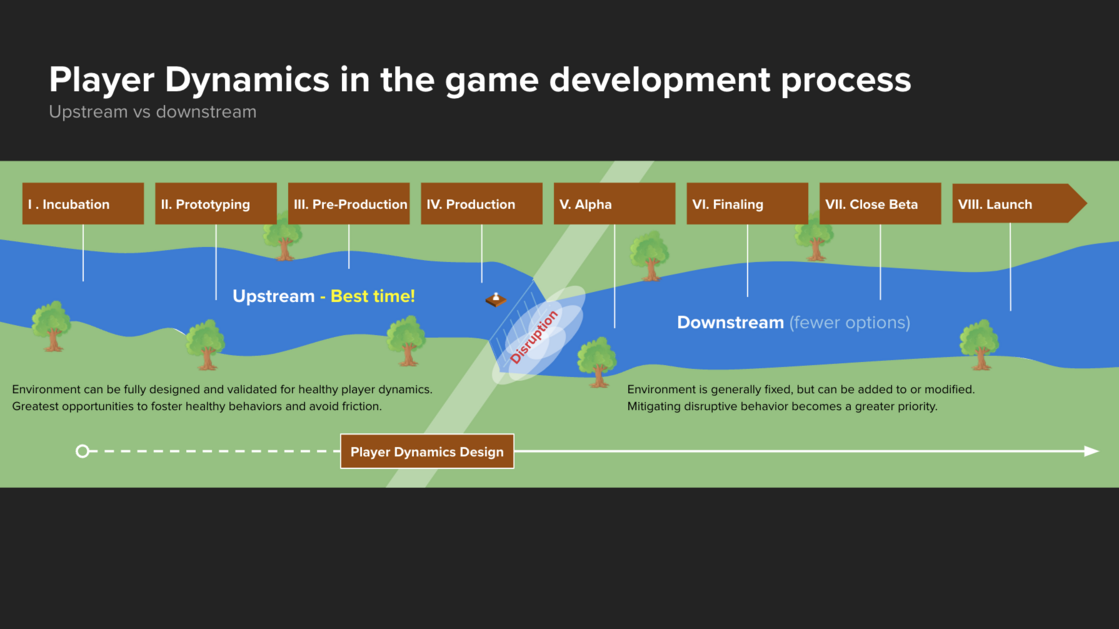
In prototyping, pre-production, and production, Player Dynamics work can involve everything from game mechanics to level design to narrative. The closer development gets to live, the more the conversation shifts towards metagame and communication systems. Disruptive behavior is naturally most likely when there are people playing the game, so risk registers and mitigations become hot topics closer to Alpha. Once launched, changes tend to become more subtle or added in and around existing systems.
At this point, we have designers focusing on all the areas listed above and more, such as Platform which considers the entire social ecosystem. Some of these folks are exclusively doing Player Dynamics design work and a few have the title “Player Dynamics Designer.” Among other things, these folks design features and services; consult with multiple teams; and develop frameworks, tools, and teaching materials.
Here are a few screenshots from an internal crash course we call “Player Dynamics 101”:
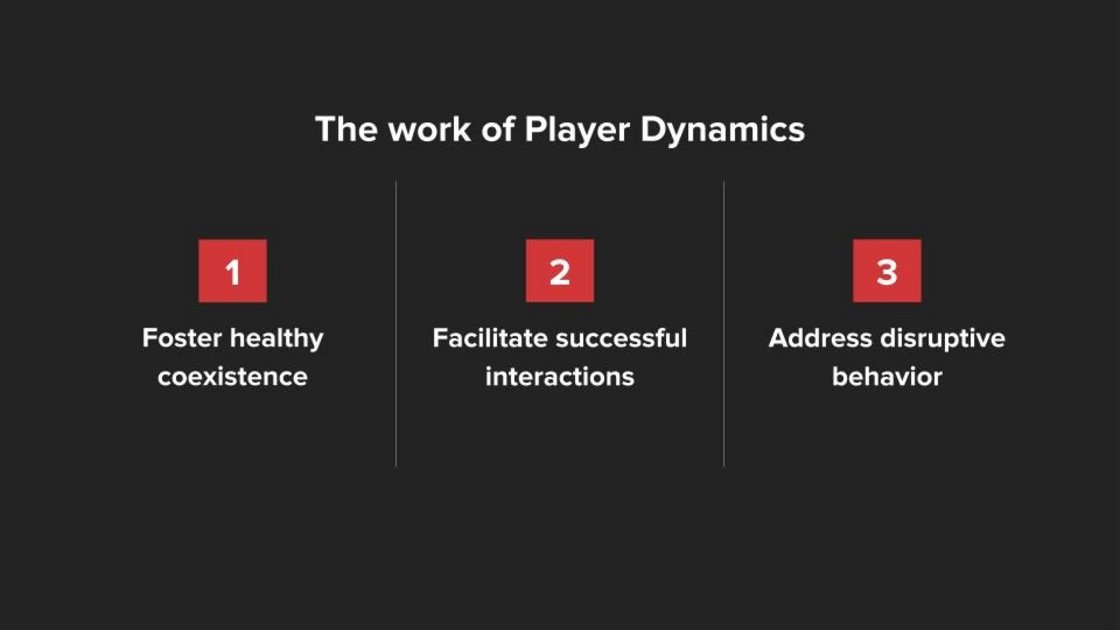
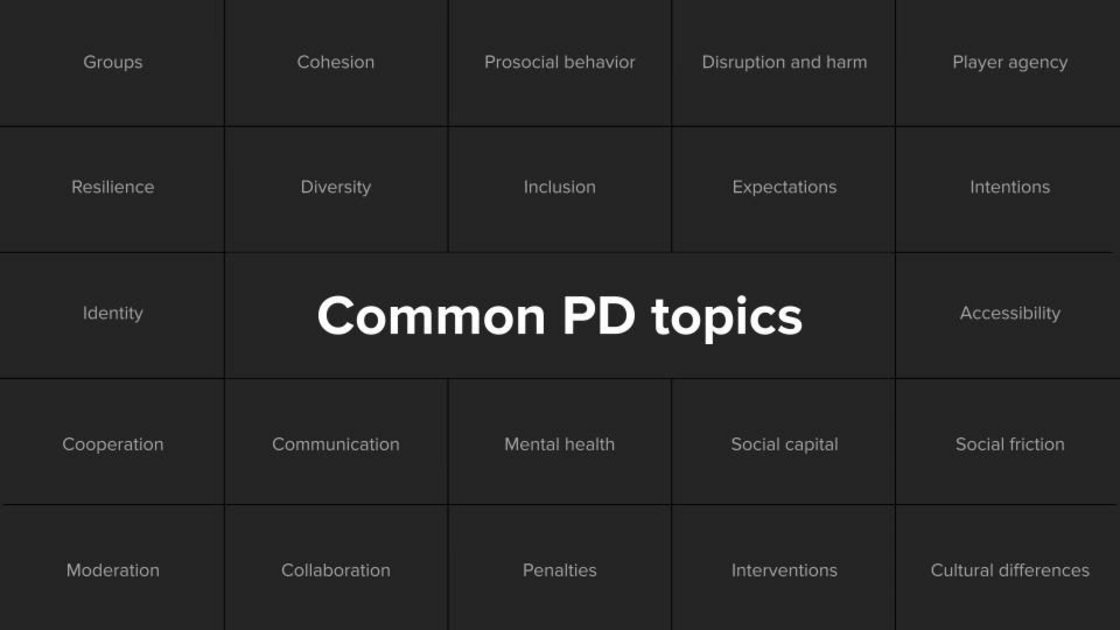
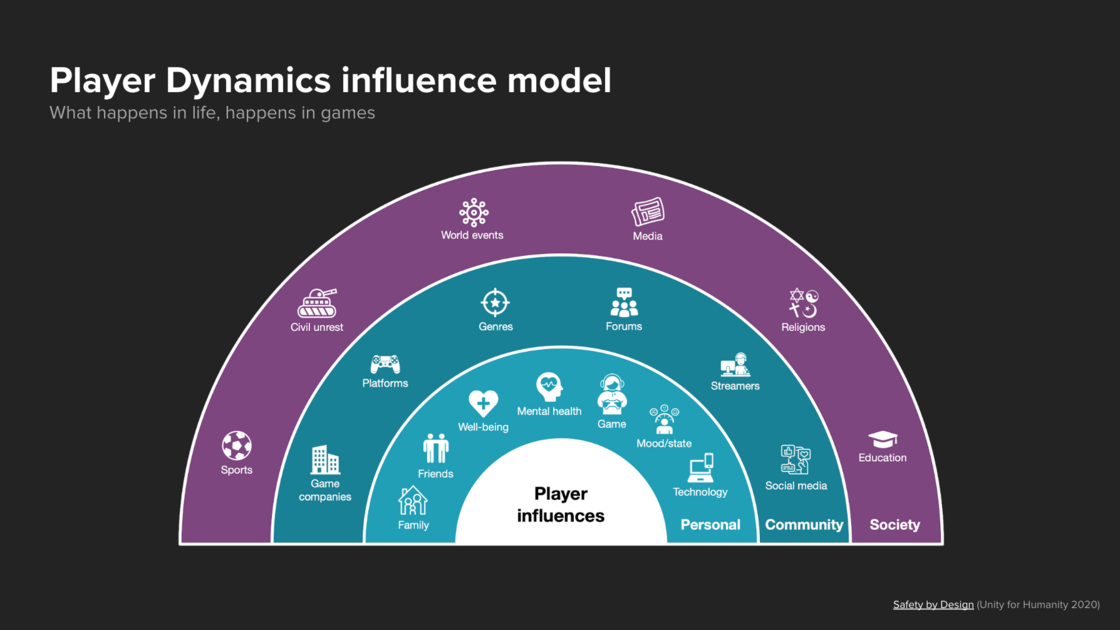
These materials are helpful in scaling Player Dynamics thinking and we want every Rioter to be equipped with enough Player Dynamics tools and knowledge to make good social dynamics decisions no matter their role.
We’d like you to be equipped as well.
With one simple phrase, anyone can begin applying Player Dynamics-thinking into their work and their lives: be multi-minded. Our next post will focus on the language Player Dynamics designers use and how it helps guide us to healthier social environments.
Weszt “Vonburgermeister” Hart
Head of Player Dynamics
Weszt specializes in Player Dynamics design, an emerging discipline for fostering healthy behavior online and designing social-friendly games and environments. His mission is to help Riot Games get good at it by leading a company-wide collective of teams and designers to develop multi-minded thinking and trailblazing solutions.
He’s an executive steering committee member of the Fair Play Alliance, a regular conference speaker, and a former signed indie music artist whose rock music you can find under his first name on most platforms.
